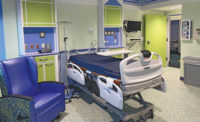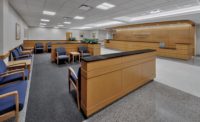Cook Childrens Health Care System Explores IPD for Office Project
Dedicated to good stewardship of its resources, the nonprofit Cook Children's Health Care System in Fort Worth, Texas, turned to integrated project delivery (IPD) to deliver a planned medical office building, putting its faith in a team of contractors and design firms to produce the facility more efficiently.


Committing to an emerging project delivery system that has seen limited use in the industry requires "a great level of trust" among team members, says George Montague, Cook Children's vice president of real estate. The team's collective success will be contractually bound as they share risks and rewards based on performance. "I feel great about the whole group," he adds.
By choosing IPD, communication is significantly improved, whether speaking face-to-face or sharing information through technology such as building information modeling, says Mark Linenberger, vice president and client executive for Linbeck of Fort Worth, the project contractor.
"We have to trust each other and ask tough questions of each other, because we're putting each others' profit at risk because of the decisions we make," he says.
Brent Sparks, associate principal and senior vice president of HKS in Fort Worth, the project architect, agrees, adding that "trust is the core of the process."
The Cook Children's IPD team expects to begin construction on the five-story, 120,000-sq-ft general office building—with flexible spaces and a seven-level, 460-car parking deck—by April 2012, with an estimated delivery date of August 2013. The new facility will consolidate about 400 administrative staffers on campus who were moved when the health system demolished prior spaces to make way for a $250-million addition.
Building a team
Strong ties between the contractor and owner have been formed over decades. Linbeck worked on various projects for Cook Children's over the past 25 years, including the patient tower now wrapping up construction. Linenberger broached the IPD idea to Montague. "There was a high level of trust, and it was a great time in the market to do something new and different and do it better," Linenberger says. Montague adds that having worked with Linbeck for so long, it made sense to use IPD and enter into a single contract, with a risk-reward pool and everyone's interests aligned.
With Cook Children's and Linbeck ready to proceed with IPD, the project needed an architect and other team members. Cook Children's put out a request for proposals and began assembling a core team in spring 2011. "HKS has tremendous experience in corporate workplaces, and of the firms that responded, it was head and shoulders above [the others]," Montague says. "Reputation counted for a lot, but the people that HKS proposed to involve in the project were people I warmed to quickly and [who] have proven in the months we have worked together to be the right kind of people, the right personalities and a good fit."
HKS also has experience designing IPD projects, such as Indiana University Health's Riley Family Tower in Indianapolis and Tradition Medical Center in Stuart, Fla. "We feel it's the only way to deliver a project and that our industry owes it to the client," Sparks says.
Other key team members include Dunaway Associates, Fort Worth, for civil engineering; CJG Engineers of Austin, Texas, for structural engineering; Fisk of Carrollton, Texas, for electrical; DynaTen Corp. of Fort Worth for mechanical and plumbing; Haworth of Holland, Mich., for interior systems; and Mutual Sprinklers of Fort Worth for fire protection.





